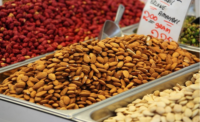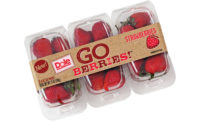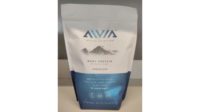Healthy snacks, protein-rich foods power growth in packaged food and bev sales
The U.S. consumer packaged goods (CPG) industry registered its strongest growth in four years in 2015, and some of the biggest gains were achieved by companies targeting the fast-growing market for protein-rich foods and healthy, ‘mindful’ snacks. These are among the findings of new research released today by The Boston Consulting Group (BCG, bcg.com) and Information Resources Inc. (IRI).
The trend was particularly noticeable among small and midsize companies, which, according to the new research, continue to seize market share from larger CPG competitors. Quest Nutrition, Fairlife, Bai, Vita Coco and Sargento Foods – all makers of high-protein foods and beverages and mindful snacks – are among the companies with annual sales of less than $5 billion that ranked among the CPG-industry growth leaders in 2015.
Furthermore, according to the research, consumers are still finding opportunities to indulge. A number of large, high-performing CPG companies derived most of their 2015 growth from such product categories as confections, ice cream and alcoholic beverages, according to IRI data. Most of these companies are, however, also introducing health-focused foods and beverages.
“Our research confirms that consumers’ desire for more healthful eating remains a powerful trend that packaged-foods companies can’t ignore,” says Jim Brennan, a BCG partner and coauthor of the study.
The research revealed that in 2015, CPG sales in the US rose by 3.1% to $670 billion, a pace last achieved in 2012. Furthermore, small companies (those with less than $1 billion in sales) and midsize companies ($1 billion to $5 billion) accounted for 46.4% of total CPG sales, a 0.5 percentage-point gain since 2014 and 2.7 percentage-point gain since 2011. That translates into an $18.1 billion shift in market share during the past four years. This growth by small and midsize companies was driven largely by their ability to gain wider distribution for their products, according to IRI data.
The findings are based on the fourth annual analysis by BCG and IRI of the growth performance of more than 400 CPG companies with annual US retail sales of more than $100 million. The study included both public and private CPG companies and focused on what consumers actually bought in measured channels as opposed to what factories shipped. Companies were ranked on a combination of three metrics: dollar sales growth, volume sales growth, and market share gains. The study also analyzed trends driving performance in the sector.
BCG and IRI generated three top-ten lists of best-performing companies: small companies ($100 million to $1 billion in IRI-measured retail sales), midsize companies ($1 billion to $5 billion) and large companies (more than $5 billion).
“Strong sales at convenience stores, which were helped by lower gas prices and reduced unemployment in 2015, boosted growth of tobacco, beverage, snack, and liquor companies, such as Altria, PepsiCo, Red Bull, Mars and Constellation Brands,” says Krishnakumar (KK) Davey, president of IRI Strategic Analytics. “The convenience channel outpaced all other measured outlets, with a dollar sales growth of 6.9%, compared with 3% for all outlets. As such, the convenience channel, which accounted for 18.7% of all measured-channel sales, contributed 39.6% in terms of growth, which is more than its fair share. The top categories in these channels benefited the most, and manufacturers that have an advantage in this channel delivered stronger growth.”
Among large companies, the top growth leaders are Reynolds American (which has acquired Lorillard), Unilever, Altria, Mars and Dr Pepper Snapple Group. The leaders among midsize companies are GlaxoSmithKline, Hostess Brands, Starbucks, Eggland’s Best and Sterilite. Topping the growth-leader list of small companies are Quest Nutrition, Teva Pharmaceuticals, Fairlife, Bai and Idahoan Foods.
Small and midsize companies that target consumers’ quest for protein are among the best performers. Quest Nutrition, whose leading products include protein bars, powder, chips and shakes, is the top-performing small company on the BCG-IRI list. Fairlife, the third-highest-ranking small company, sells ultra-filtered milk, which is richer in protein than conventional milk. The brands of WhiteWave Foods, which is among the best-performing midsize companies, include Horizon organic dairy and Silk plant-based beverages. Vega makes food and beverage products that contain plant-based protein.
A number of makers of mindful snacks that promote health and wellness also made best-performer lists. Bai is a maker of low-calorie, antioxidant fruit drinks infused with the outer layer of coffee berries. Vita Coco, which made the best-performing small CPG company list for the third consecutive year, markets coconut beverages and oil. Ready Pac Foods makes a wide range of on-the-go salads, and KIND makes whole-grain bars and clusters. The growth of Sargento, a top-performing midsize company, is driven by its Balanced Breaks brand fruit, nut and cheese snacks.
Most of the best-performing large companies also offer healthy foods and beverages, but much of their growth is still driven by consumer indulgences. Strong sales growth in M&M’s chocolate, Juicy Fruit gum, and Dove chocolate and ice cream helped make Mars a leading performer in 2015, for example, and ice cream makers Ben & Jerry’s and Breyers were major contributors to sales growth at Unilever, according to IRI data. Soft-drink giants Dr Pepper Snapple, CocaCola and PepsiCo are all among the top seven large-company performers, while Constellation Brands, whose growth is driven by Corona and Modelo beer, made the midsize list.
Several pharmaceutical manufacturers also ranked among 2015’s best performers, largely by successfully bringing prescription drugs to the over-the-counter market. For example, Pfizer and GlaxoSmithKline began marketing nonprescription Nexium and Flonase, respectively, while Teva Pharmaceuticals introduced an over-the-counter contraception product.
Another significant finding of the research: small CPG performance leaders are achieving strong growth primarily through wider product distribution. In some cases, this is because small companies are getting better placement on retail shelves or they are having their brands distributed by large CPG companies. According to BCG’s analysis, small companies are also boosting sales through online retailers and promotion through social media. By contrast, the growth of most large high-performance CPG companies is driven by higher product sales at existing retail channels, according to IRI data.
“These findings underscore that the growth opportunities in consumer packaged goods remain diverse,” says Peri Edelstein, a BCG principal and coauthor. “The top performers are companies that best understand and capitalize on consumer trends and are able to stimulate fundamental demand.”
Looking for a reprint of this article?
From high-res PDFs to custom plaques, order your copy today!






